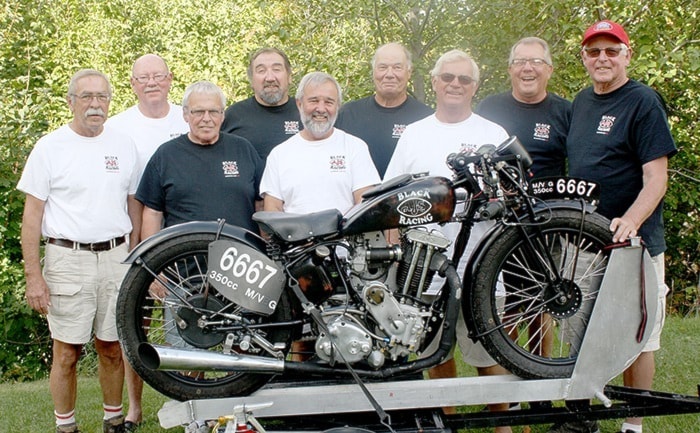The Black AJS Racing Gang, describe themselves as “gear-heads,” guys who like anything with motors and wheels. Because Bonneville is such a “cool place for gear-heads,” last month they took a 1933 AJS 350cc motorcycle there, to see how fast it would go.
The Bonneville Salt Flats are located in northwestern Utah, USA and are well known for the place to race and set land speed records.
This year, more than 600 vehicles were there to take part in the World Speed Event.
Frank Kinney and Dick Knorr are experienced racers at Bonneville.
Kinney set a world record of 208.974 miles per hour, driving his 1970 Opel there in 2012. Both of these men and their team were looking for a reason to return to Bonneville.
John Gregg had an old AJS motorcycle sitting in his garage for almost 50 years, not in very good shape and incomplete.
“John donated it to the cause,” said Kinney. “The guys stepped up and wanted to be involved.”
Getting the bike ready to race was a real team effort. Most of the work parties were held at Kinney’s place.
“Because of its age, there are virtually no parts available so a lot of stuff had to be made from scratch,” explained Gregg.
“Between the bunch of us and Ken Brown, we made the pieces we needed. He (Brown) did a lot of machining for us and fancy welding. He made the critical engine parts.”
Knorr was the “meticulous” engine builder, Wayne Chenery painted the bike and Jack Barkwill stepped up as a major financial sponsor for the project.
The rest of the team helped in whatever way they could and enjoyed the camaraderie of the group.
John Dorn jumped at the chance when he was asked if he would be interested in riding the bike on the salt flats race course.
After much work and preparation the gang set out, hauling the old motorcycle in a trailer down to Bonneville, staying at Wendover, the nearest small town.
Lining up each day in the hot sun, waiting your turn can be a grueling task. Barkwill said that one must take along as much sunscreen as they do motor oil.
During the week-long event, the motorcycle and rider took 10 runs, with the rest of the team standing by, ready to make mechanical adjustments and recover the bike at the end of each run.
“The story at Bonneville isn’t quite fulfilled because we didn’t get the record we wanted. We had problems with the way it ran, but the good news was we didn’t break anything,” explained Gregg. “The record was 89 miles per hour and our best speed was 79.”
Driving on the salt flats requires some rookie training ahead of the actual runs, in order to get the feel of it.
“You have to ease out from the starting line because there is a layer of hard salt and then a granular layer on top of that. If you just drop the clutch you would just skitter around,” Dorn explained.
“The absolute worst thing that happened was the poor little bike packed it up on the track itself. Because it stopped at an inopportune time and place, there was no nice groomed trail to push it off at. I got into what is called the crunchies, which is wet salt that soon got caught between the wheel and the fenders. Imagine 100 degrees Fahrenheit weather, in a leather suit and a helmet, trying to push the bike off to the recovery road…that was pretty tough.”
Because the motorcycle quit the way it did, with a “clean cut” on the engine, the team was able to look at the spark plug and tell whether the carbeuration was set too rich or too lean in its fuel to air ratio.
They determined the engine was not tuned to its maximum potential.
This gang will now occupy themselves with tinkering on the old motorcycle while enjoying each other’s company.
They have every intention of returning to Bonneville again, with hopes of breaking the land speed record.
“Speed fever is kind of like gold fever,” said Barkwill. “There is always next year.”
